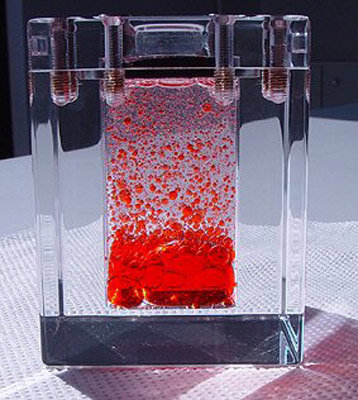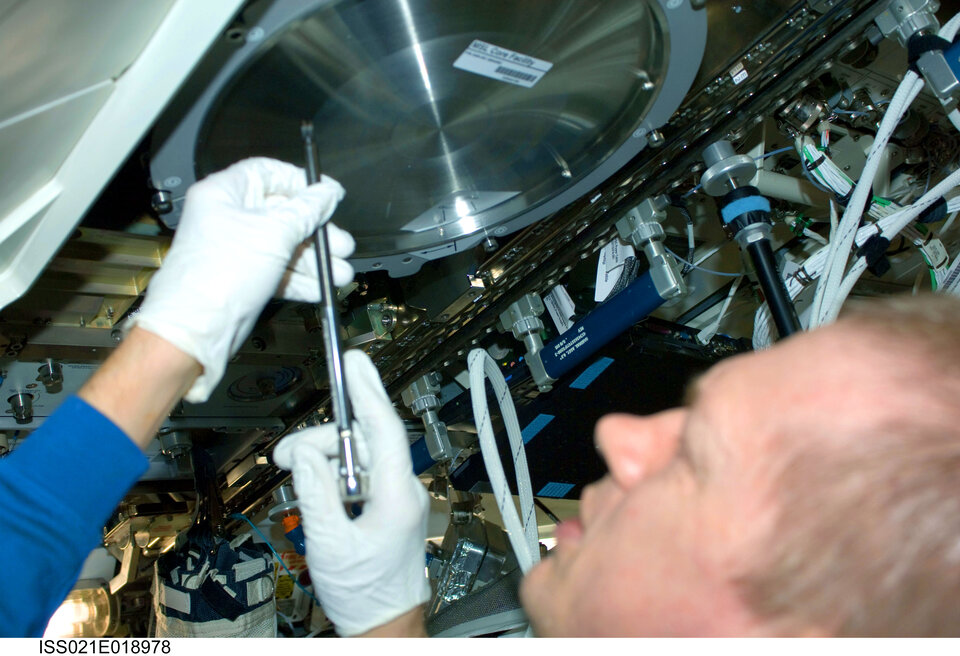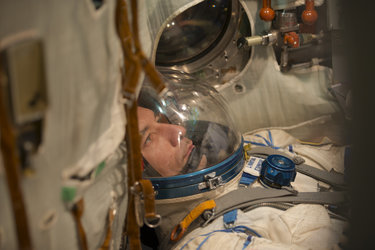Physics
FASES
Every cook knows the problem when concocting a salad dressing: getting the oil and vinegar to mix nicely requires the right ingredients and lots of vigorous stirring. This is because vinegar and oil, two basic ingredients in salad dressings do not mix, but end up in an emulsion – small droplets of vinegar suspended in oil.

Studying the underlying physics of emulsions on Earth is problematic as gravity pulls emulsions apart. Leave a salad dressing overnight and the next day the oil and vinegar will have separated, gravity pulling the heavier oil to the bottom of the mix.
Emulsions in food, cosmetics and pharmaceuticals often need to be stable for long periods of time. Who would want to eat a mayonnaise with all oil and egg yolk separated? On the other hand, it can be necessary to separate or destabilise fluid emulsions such as separating crude oil.
FASES is linked to another experiment FASTER that are performed on ESA’s Columbus laboratory to examine emulsion stability and the characteristics of emulsion droplets, without gravity getting in the way of the observations. An accurate model of emulsion dynamics would be used by industry to improve their products.
The FASES experiment arrived at the International Space Station on ESA’s ATV Albert Einstein.
CETSOL-2/MICAST-2/SETA-2

These experiments use ESA’s Materials Science Laboratory on the Station. Nothing less than a miniature metal furnace in space, the Materials Science Laboratory can heat samples to 1400°C before letting the metals solidify.
Researchers examine growth patterns and evolving microstructures as samples of metallic alloys crystallise. The results will complement computer simulations and help to produce more efficient aluminium alloys for the transport industry.
The transport industry is keen to use data from CETSOL-2 to reduce weight and increase strength of aircraft and road vehicles. Metal foams are already being used in cars and cranes and research on the International Space Station is helping to develop newer alloys. MICAST-2 uses magnets to control the flow of aluminium alloys on a miniature scale. Will better metals result from finely influencing the casting process? SETA-2 will look at patterns formed in aluminium alloys mixed with manganese and silicon as they solidify.
SODI‐DCMIX

Fluids and gases are never at rest, even if they appear to be when viewed by the naked eye. But molecules are constantly moving and colliding even though there is no microscope powerful enough to see the phenomenon. Scientists are interested in observing and measuring these movements because they reveal important, practical information such as how heat spreads in a fluid and how quickly fluids mix.
Creating accurate models of how fluids heat is harder than it might seem. School physics classes can work out how long it would take to boil a litre of water, but what if the water were mixed with oil or a multitude of different liquids? Measuring liquid mixtures at rest is not always possible on Earth because heavier elements in a mixture will follow gravity and sink to the bottom.
A mixture on the International Space Station is free from the constraints of gravity and will not separate. SODI-DCMIX exploits this fact to record temperatures of mixtures in space using optical techniques to understand how molecules move in liquids.









